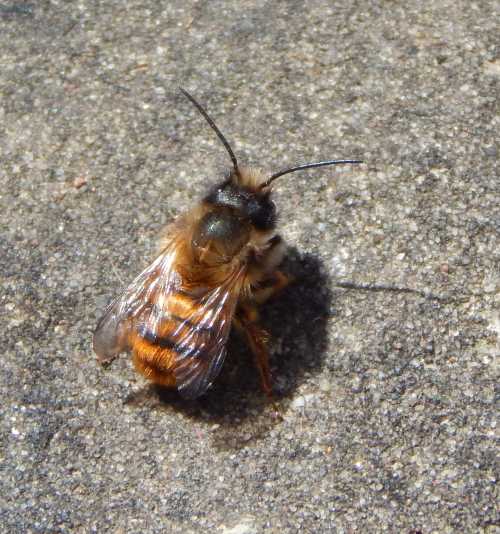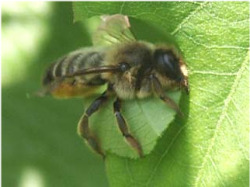Bee House Vs Apiary
I hear a number of common questions regarding the difference between a bee house and an apiary, and whether or not bees will make a home in either, among other things.
So, bee house vs apiary: let's explore further....
Bee House Vs Apiary: FAQs, Definitions, Bees And More
In summary, these are the key differences between a bee house and an apiary:
| Apiary | Solitary Bee House | Bumble Bee House |
|---|---|---|
| More than one bee hive, each hive housing a honey bee colony. | May house one or multiple solitary bees, usually mason or leafcutter bees. Females independently lay eggs in single tunnels | One colony of bumble bees, usually housing 100 - 200 individuals. |
An apiary for honey bees, a bee houses for bumble or solitary bees.
The first thing to remember is that an apiary is always concerned with honey bees, and a minimum of two (but possibly more) bee hives, each housing a colony of honey bees.
A bee house, on the other hand, is a possible home for solitary and bumble bee species.
What does an apiary look like, vs a bee house?
Below is a photograph featuring multiple honey bee hives. It can be described as an apiary.
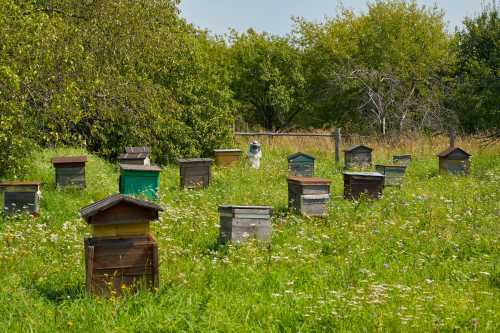
A bee house may be designed for solitary bee species (such as mason bees or leafcutters) or bumble bees.
A bee house (or 'bee hotel') for solitary bees comprises a collection of 'tunnels' either drilled into wood, or made from hollow canes or tubes. Multiple females of a solitary bee species may create egg cells and lay eggs in each individual tube.
Bee houses can come in all shapes and sizes. Below is an image of a solitary bee house:
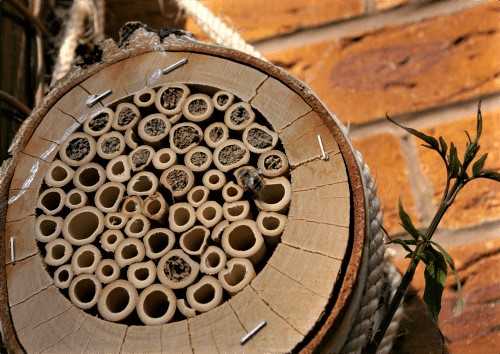
A bumble bee house will usually comprise a box, often wooden, or suitable and specially designed container to house a single bumble bee colony.
Below is an example of a bumble bee house, the image having been supplied by a lady who created a racoon-proof bumble bee house:
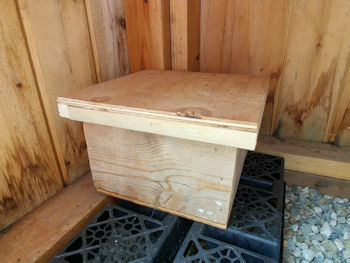
Can bumble bees live in solitary bee houses or apiaries? Can honey bees live in a bee house?
It would not be possible for honey bees to live in a solitary bee house, because of size and nesting requirements for honey bees (space for building honey combs and interactions between thousands of bees).
A bumble bee house is much smaller than a bee hive and is therefore unlikely to have the space required for a honey bee colony. If not living in a bee hive, in the wild honey bees tend to select large cavities in hollow tree trunks or even caves or chimneys.
If a bee hive was unoccupied by honey bees, technically, it would be possible for a bumble bee to take advantage of the space (but not if honey bees are present). In the same way, if a solitary bee found a suitable crevice within the structure of an empty bee hive, it would be possible for it to create nest cells and lay eggs, but it would have no need to use the hive in the same way as honey bees.
Could I attract honey bees to my solitary bee house? Do I need a bee hive to attract bumble bees, mason bees or leafcutters?
For the reasons given above, honey bees would not be attracted to a solitary bee house. A bee hive would not be the best way to accommodate bumble bees or solitary bees.
What's an apiary, and what does 'apiary' mean?
It might help when referring to the word 'apiary', to consider both the legal and dictionary definitions, and to understand its origin. In this way, the differences can be more clearly understood.
Dictionary definitions
The online Cambridge Dictionary tells us an apiary is:
"a place where people keep bees, especially a collection of hives kept to provide honey".
My Collins Concise English Dictionary also tells us there is a written citation for the word "apiary" dating back to the 17th century, that it comes from the Latin "'apiarium" which is derived from "Apis" which according to the Latin dictionary relates to "bee" and swarm".
Legal and government definitions may vary depending on country and region.
However, here is one example of a legal definition from Massachusetts Department of Agricultural Resources, Department Of Agricultural Resources "330 CMR 8.00: APIARY INSPECTION REGULATIONS1" states:
"8.01: Definitions
Apiary: any place or location where one or more hives containing honey bees and associated bee equipment is kept."
As an aside, 'Apiology' is the scientific or systematic study of honey bees and is a word with a similar root (read more on my page: What is a Bee Expert Called?).
Interesting Trivia:
The largest 'traditional' apiary in the world is said to be the Inzerki Apiary in Morocco constructed in 1850, and having at least 3,700 hives.
References
1. Massachusetts Department of Agricultural Resources, Department Of Agricultural Resources "330 CMR 8.00: APIARY INSPECTION REGULATIONS".
If you found this page helpful or interesting, I'd really be grateful if you would share it with others - if not this page, perhaps another, such as Gardening For Bees.
Thank you so much :) .
